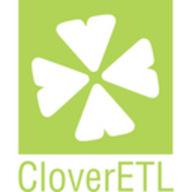

CloverETL and Azure Data Factory compete in the data integration platform category. Azure Data Factory has the upper hand due to its advanced features and scalability, ideal for larger enterprises.
Features: CloverETL provides customizable data transformation, a wide range of connectors, and flexibility, beneficial for small to mid-sized teams. Azure Data Factory supports extensive Microsoft ecosystem integrations, seamless cloud and on-premises data movement, and robust scheduling, appealing to enterprises with complex workflow needs.
Ease of Deployment and Customer Service: Azure Data Factory users benefit from extensive Microsoft support resources and comprehensive documentation, which streamlines deployment for Microsoft-experienced teams. CloverETL offers a straightforward deployment model suitable for organizations with limited resources, but its support availability is less extensive.
Pricing and ROI: CloverETL's competitive pricing and lower initial setup costs provide a favorable ROI for small to mid-sized businesses. Azure Data Factory, with pricing reflecting its enterprise-level capabilities, requires a higher initial investment, yet offers scalable solutions that justify the cost for businesses with complex data processing needs.
| Product | Market Share (%) |
|---|---|
| Azure Data Factory | 5.2% |
| CloverETL | 0.5% |
| Other | 94.3% |

| Company Size | Count |
|---|---|
| Small Business | 31 |
| Midsize Enterprise | 19 |
| Large Enterprise | 55 |
Azure Data Factory efficiently manages and integrates data from various sources, enabling seamless movement and transformation across platforms. Its valuable features include seamless integration with Azure services, handling large data volumes, flexible transformation, user-friendly interface, extensive connectors, and scalability. Users have experienced improved team performance, workflow simplification, enhanced collaboration, streamlined processes, and boosted productivity.
We monitor all Data Integration reviews to prevent fraudulent reviews and keep review quality high. We do not post reviews by company employees or direct competitors. We validate each review for authenticity via cross-reference with LinkedIn, and personal follow-up with the reviewer when necessary.